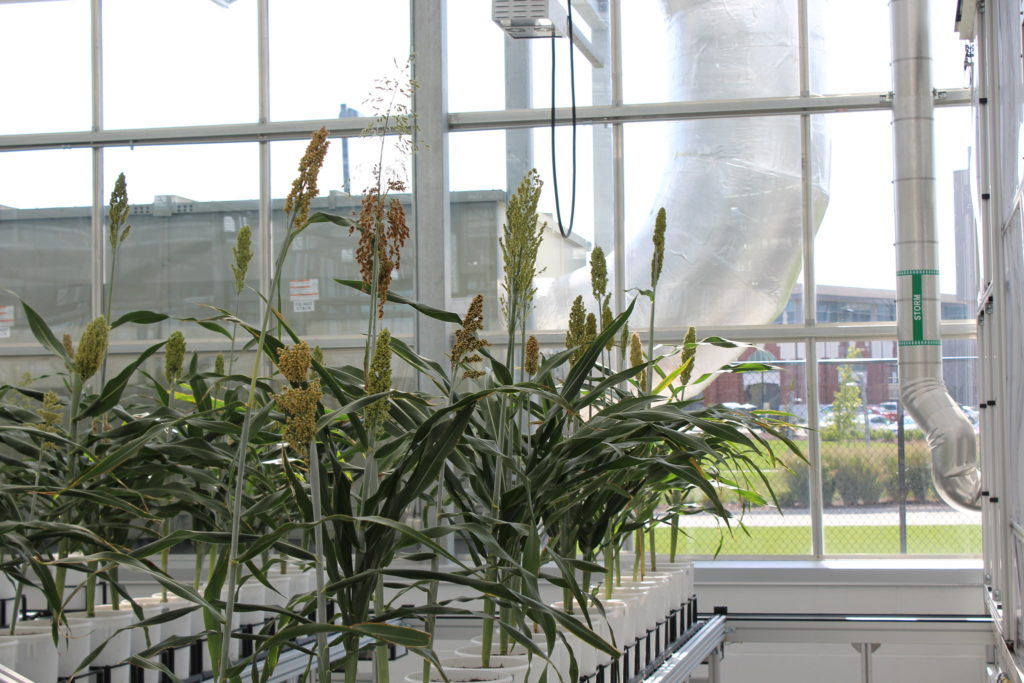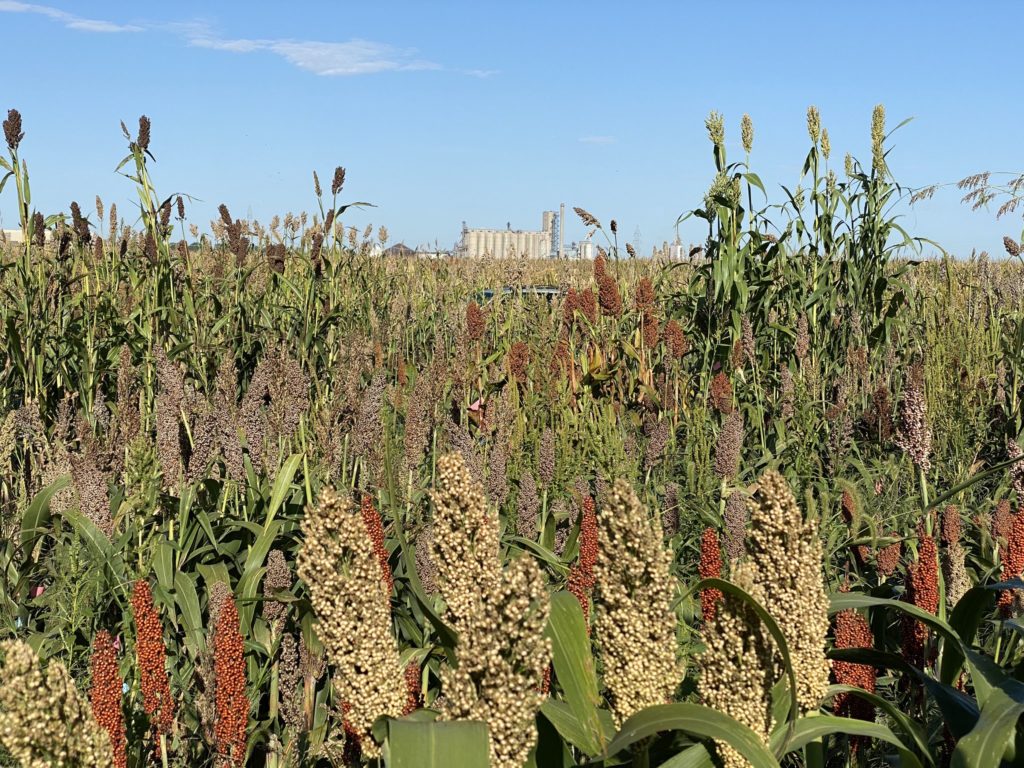A really nice thing about many crop plants is that through natural self pollination it is possible to create true breeding inbred lines. Inbred lines plants that are homozygous across all or nearly all of their genomes. If the same inbred plant is the used as the mother and father to produce new seeds, all those seeds will be genetically identical to the parent plant. Just like identical twins. And like identical twins, inbred lines make it possible to understand a LOT more about the interplay of genetics and environment since we have a chance to see how different or similar the characteristics of genetically identical individuals turn out to be.
In many crops large sets (hundreds or thousands) of different inbred lines are assembled together into populations called diversity or association panels. People can grow all the lines, measure a plant property they are interested in across all the different plant varieties, and then look for genetic markers that are correlated with variation in that trait to figured out which genes in that plants genome control that trait. If scientists do this for one or a few markers it is called an “association study”. If they do it for lots of lots of genetic markers distributed across the whole genome it is called a “genome-wide association study” (or GWAS). You don’t need an panel of inbred lines to run a genome wide association study (people run GWAS in humans all the time) but using an inbred panel can make the process a lot faster and easier, because people only need to look at a given genetic marker once across the population and then, because the genetics of the individual inbred lines don’t change over time, the same genetic marker information can be reused over and over again by new people trying to figure out which genes control different traits. This means a new research project will have to grow the plants and measure the properties of the plants, but NOT have to genotype all the plants again.

Today the specific association panel I’m talking about is called the Sorghum Association Panel (Casa et al. 2008). The goal of the people who put the panel together was to capture global sorghum genetic diversity. But they had a problem because they were based in the USA and many sorghum varieties comes from places like Africa and India with a very different climate and growing season. If they planted those sorghum varieties in the USA the sorghum would happily grow all season, but it’d never flower. Just grow more and more leaves and get taller and taller under the frost came and killed it. Dead plants are hard to phenotype, and they are also hard to produce more seed from. The solution the team came up with was to use Sorghum Conversion Lines.
What is a Sorghum Conversion Line? Sorghum Conversion Lines are created by crossing a diverse sorghum variety from somewhere in the world to a line that is well adapted to growing in the USA. Then they take the new hybrid variety and backcross to its non-USA adapted parent several times while selecting for the ability to grow and produce seed in the USA. Finally they self pollinating the resulting variety over several generations to produce a new inbred line that shares most of its genes with the diverse sorghum variety from somewhere in the world, and just enough genes from the USA line to be able to grow happily and produce seed in the United States.
The people who put the Sorghum Association Panel together did a great job and lots of different people used the same population to study different phenotypes. At least 40 different papers used this population and people measured more than 190 different traits (Mural et al. 2021)! Some of these papers did association studies with only a small number of markers. Many used a published set of more than 265,000 markers generated in 2013 to do genome wide association studies. But even that large set of markers was only a small set of the total genetic variation of sorghum from all over the world.

This Christmas a group of scientists based at Clemson University used new and better technology to sequence the whole genomes of all 400 sorghum varieties in the Sorghum Association Panel (Boatwright et al. Preprint). This let them look at tens of millions of different genetic markers instead of hundreds of thousands. The new and much more comprehensive understanding of all the genetic differences among these 400 sorghum lines allowed them to identify new genes/signals using the same existing phenotypic data that had been used to conduct GWAS in the past.
I know from personal experience that good phenotypic datasets are built through determination, grit, and (sometimes) tears. It feels good when a project makes it possible to produce new knowledge and insight from the hard work and sacrifice of past scientists. That why I was glad I got to be a small (very) part of this project.
- Casa, A. M., Pressoir, G., Brown, P. J., Mitchell, S. E., Rooney, W. L., Tuinstra, M. R., … & Kresovich, S. (2008). Community Resources and Strategies for Association Mapping in Sorghum. Crop Science, 48(1), 30-40.
- Mural, R. V., Grzybowski, M., Miao, C., Damke, A., Sapkota, S., Boyles, R. E., … & Schnable, J. C. (2021). Meta-analysis identifies pleiotropic loci controlling phenotypic trade-offs in sorghum. Genetics, 218(3), iyab087.
- Boatwright, J. L., Sapkota, S., Jin, H., Schnable, J., Brenton, Z., Boyles, R., & Kresovich, S. (2021). Sorghum Association Panel Whole-Genome Sequencing Establishes Pivotal Resource for Dissecting Genomic Diversity. bioRxiv. 2021.12.22.473950; doi: 10.1101/2021.12.22.473950